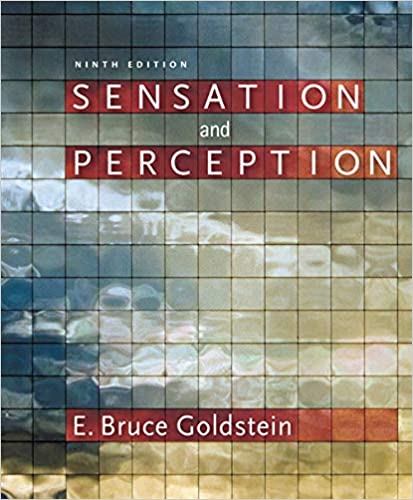
Sensation and Perception 9th Edition by Bruce Goldstein
Edition 9ISBN: 978-1133958475
Sensation and Perception 9th Edition by Bruce Goldstein
Edition 9ISBN: 978-1133958475 Exercise 1
This chapter argues that although perception seems simple, it is actually extremely complex when we consider "behind the scenes" activities that are not obvious as a person is experiencing perception. Cite an example of a similar situation from your own experience, in which an "outcome" that might seem as though it was achieved easily actually involved a complicated process that most people are unaware of.
Explanation
One process which seems simple on the surface but is actually exceedingly complicated is the working of television (TV). From the audience's perspective, the TV simply turns on and shows whatever is airing on the channel. However, the airing of a television program involved an exceedingly complex, interconnected process.
Firstly, the TV must be properly configured to receive the right kind of information. A TV operating by antenna will receive different signals than a TV operating by satellite dish. The program in question must be transmitted over the right channels to the TV with the correct configuration, in order to be displayed successfully.
Next, there is the financial aspect to consider. The airwaves of an antenna and those of a satellite dish may be controlled by differing service providers. Hence, the producer of the program will have to negotiate with one or both of these service providers, if they want their show to be transmitted. Also, the viewer will have to be subscribed to the right service provider to be able to watch the show.
Lastly, there are the mechanisms by which the radio waves are converted into the audiovisual medium that is viewed by the audience. A signal transducer would need to trigger mechanisms within the TV. These mechanisms would be different for a cathode ray tube TV and a plasma-screen TV. The converted images and sounds are what the viewer sees at the end of the entire process.
Firstly, the TV must be properly configured to receive the right kind of information. A TV operating by antenna will receive different signals than a TV operating by satellite dish. The program in question must be transmitted over the right channels to the TV with the correct configuration, in order to be displayed successfully.
Next, there is the financial aspect to consider. The airwaves of an antenna and those of a satellite dish may be controlled by differing service providers. Hence, the producer of the program will have to negotiate with one or both of these service providers, if they want their show to be transmitted. Also, the viewer will have to be subscribed to the right service provider to be able to watch the show.
Lastly, there are the mechanisms by which the radio waves are converted into the audiovisual medium that is viewed by the audience. A signal transducer would need to trigger mechanisms within the TV. These mechanisms would be different for a cathode ray tube TV and a plasma-screen TV. The converted images and sounds are what the viewer sees at the end of the entire process.
Sensation and Perception 9th Edition by Bruce Goldstein
Why don’t you like this exercise?
Other Minimum 8 character and maximum 255 character
Character 255


